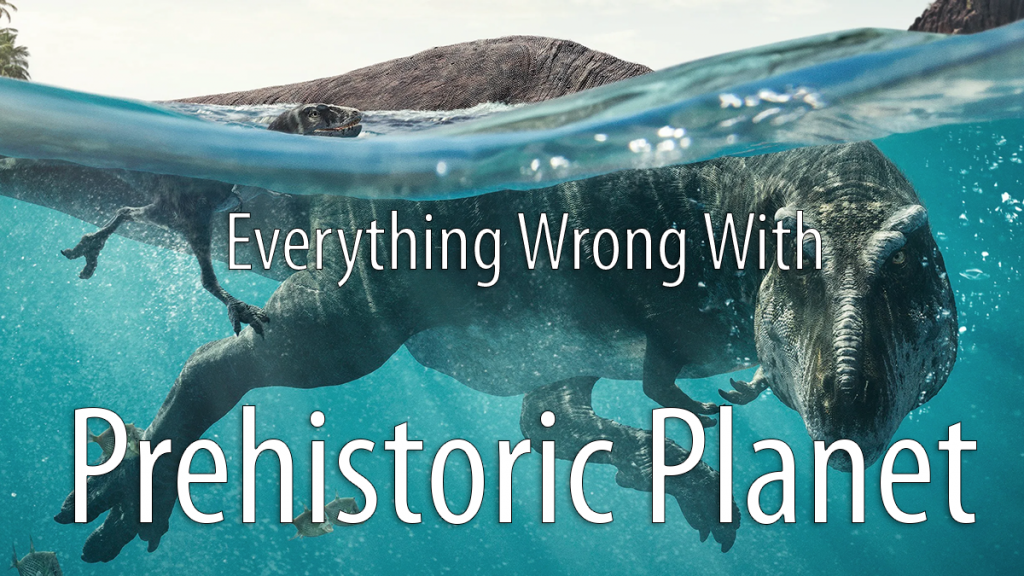
For a primer on this blog series and an FAQ see here.
| Other Episodes |
||||
| Coasts | Deserts | Freshwater | Ice Worlds | Forests |
| Islands | Badlands | Swamps | Oceans | North America |
This episode features contributions from the following paleontology consultants:

- Steve Brusatte
- John Conway
- Alexander Farnsworth
- Scott Hartman
- Robert Spicer
- Paul Valdes
- Mark Witton
- Darren Naish
This episode is focused on island (or potential island) life of the Maastrichtian.
Scene 1: A river mouth of future Romania
Reasonable inference…but still speculation
Zalmoxes the unexpected passenger
The scene opens after the events of a storm that trapped a Zalmoxes robustus on a raft of vegetation slowly working its way out to sea. Z. robustus was a small dinosaur and would have been a good “candidate” for island colonization via rafting. It’s also possible that the species was that small specifically because it was an island native. Naish goes into some detail on the Twitter Megathread regarding the push to show rafting as a means of island colonization. I think he gets a bit too absolute in some statements (few things must have happened). That said, Attenborough’s narration handles the rafting speculation well by incorporating lots of cautious language throughout. Pretty well done here.
Weird artistic choice
Tail fluke placement of Prognathodon
This is a short moment, but we are shown the mosasaur, Prognathodon solvayi patrolling the waters around our trapped Z. robustus. At one point, we see the tail fluke of P. solvayi break the water’s surface in a manner meant to envisage a scene from jaws. I’m not really a fan of the “homage” here, but I also don’t like most fan service.
Scene 2: Northern shores of the Tethys (future Mediterranean)
Baseless speculation
Galloping pack of Hatzegopteryx
The main part of this scene features the return of Hatzegopteryx thambena as a “pack” of them literally hit the ground running. I know that Naish and Witton are particular champions of the terrestrial (but not flightless) azhdarchid model (Witton and Naish 2008), but I’m unaware of any good biomechanical data to support a galloping like run in these large animals. Lumbering and power-walking would seem more reasonable for a large animal that can also readily take to the sky. For comparison, modern vultures reach the high end of volant bird size and they are rather ungainly runners (looks a bit like a weak skip).
Hatzegopteryx the “intelligent pterosaur”
As the hunt commences, we are shown H. thambena slowly moving through the clearing in an attempt to flush out a creche of Tethyshadros insularis. Attenborough tells us that “Hatzegopteryx are very intelligent pterosaurs” I’m not sure where those data are coming from. We have very little data on pterosaur brains (e.g., Codorniú et al. 2016), with most of those data pointing to pterydactyloids evolving more compact, larger brains with most of that expansion in the cerebellar area (coordination of movement). That doesn’t mean H. thambena was a dumb animal or incapable of intelligent acts. My misgiving here is with the hyperbolic phrasing.
Tethyshadros juveniles break their silence
As the “pack” of H. thambena close in, the creche of juveniles lose it and begin running away, screaming the entire time. This is the last thing we would expect a prey animal to do. fawns, rabbits, and several lizards will stay still until you are almost on top of them before they make a break for it, and when they do they stay quiet the entire time. These little dinosaurs need to learn to shut up.
Surviving juveniles nuzzle their mothers
Not much more to say there. This is effectively a mammal-only thing, and even that may be too broad a category.
Mostly speculation
Extended parental care in Tethyshadros
This scene features mother T. insularis “worried” for their children that are currently being hunted. This extends into worried looks and alarm calls from the woods. This approach to parental care in hadrosaurs is controversial at best. As discussed in previous threads, we have some data to support nest guarding and possibly parental feeding, but we don’t know how long the young would stay with their parents. Mixed-age trackways are rare for dinosaurs, including hadrosaurs (e.g., Varricchio and Horner 1993; Wosik et al. 2020). To Naish’s credit, he does acknowledge the controversy associated with this interpretation on the Megathread.
Reasonable inference…but still speculation
Tethyshadros herd living
T. insularis is shown living their island life as a small herd. At this point in time we only have two specimens of T. insularis and they were not found together. Herd living is well-known for several hadrosaur species, but that doesn’t make it universal to all of Hadrosauridae. Leaning on other hadrosaurs for potential social behaviour is fine even if they are kinda getting the one size fits all treatment.
Technical whoopsie
Tethyshadros out of time and place
After production, new data for T. insularis came out indicating that this “island dwarf” was probably not an island dweller at all and was just a basal hadrosaur (so, before they got big). Adding “insult to injury” here, a reanalysis of the data revealed that this species was from the Campanian rather than the Maastrichtian. Naish covers this discordance with the show in the Megathread. Since it’s all post-production, this is an understandable mistake.
Scene 3: Madagascar
Baseless speculation
Majungasaurus vs. Simosuchus family
The conceit of this scene is a herd / pack / family of Simosuchus clarki are confronted with a hungry Majungasaurus crenatissimus. These were sympatric animals so this interaction could certainly happen. Similarly, S. clarki is known from several specimens in association, so arguing for at least some sociality here is justifiable. The problem with this scene is everything else that happens after the initial introduction.
We are shown S. clarki running to burrows and warning each other of their imminent threat as if they were a family of meerkats. As I said, we have some evidence to argue for some sociality, but we have no evidence to support family burrows or even regular burrows. S. clarki had a build that could support a semi-fossorial life (Sertich and Groenke 2010 note a lack of specialized anatomy for burrowing but that it doesn’t preclude burrowing), but no specimens have been found in or near a burrow, so that part is speculative.
S. clarki running into its burrow and using its osteoderm-laden hind-end to block the entrance, or wagging its pug-like tail as a threat display. All of these are completely made up behaviours. Per the Megathread, Naish justifies this approach by pointing to the conflicting needs of the show with the data.
 While I agree with the reasoning here, I disagree with how this gets portrayed. This scene is a prime example of why PP would work better as Prehistoric Fiction rather than a “documentary”.
While I agree with the reasoning here, I disagree with how this gets portrayed. This scene is a prime example of why PP would work better as Prehistoric Fiction rather than a “documentary”.
Egg laying Adalatherium
Later in the scene we are introduced to the gondwanathere, Adalatherium hui. This early mammal is depicted as an egg layer despite a lack of evidence to support this. As of this writing we have no evidence for the reproductive mode of any gondwanathere. With extant monotremes being much closer to the base of Mammalia than any other mammal today, once could infer that oviparity was retained for a long time within Mammalia. However, the Megathread indicates that there was more going on behind the scenes to make this happen. In short, no one who studies multituberculates and gondwanatheres was willing to commit to an oviparous or viviparous form of reproduction. The data just aren’t there. That’s good science. Unfortunately, as is often the case, good science will clash with entertainment.

So…there we go. Notably, a study published after PP finished production found that multituberculate bone histology aligned closer to viviparous eutherians than with oviparous monotremes (Weaver et al. 2022). Though gondowanatheres are not multiberculates, their sister-group relationship could indicate that viviparity was more likely for them too. To Naish’s credit, this outcome was discussed in the Megathread.
Speedy growing Adalatherium
In the show, Attenborough informs the audience that the A. hui hatchlings quadrupled their size in only four months. Given that we only have one specimen of A. hui and as discussed above, we have no idea about their actual reproductive mode, this statement is completely made up.
Masiakasaurus the burrow hunter
Later in the Madagascar scene we see a return of Masiakasaurus knoppfleri (last seen in Freshwater). Attenborough informs the audience that M. knoppfleri was particularly well adapted for capturing burrowing prey. This is a strange statement to make as it doesn’t appear in the literature and would seem to go against the procumbent teeth of M. knoppfleri. The argument seems to come straight from PP itself as Attenborough discusses the long, narrow head being a good fit for grabbing prey in burrows. [Ed: See comments for where the originally idea likely came from]
Mostly speculation
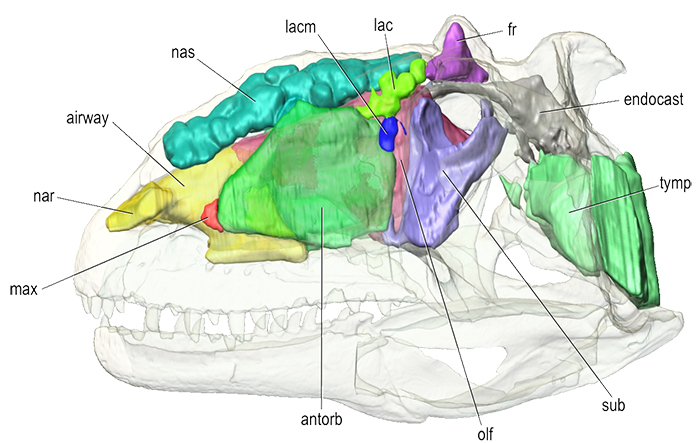
Cranial horn on Majungasaurus
The depiction of Majungasaurus crenatissimus shows the animal with a large horn growing out of the top of its head. This is based on preserved skulls of M. crenatissimus showing a median cornual process on the top of the skull table and referred to as a horncore (Sampson and Witmer 2007). In life, this horncore would have been covered by either a slip of horn (i.e., heavily-keratinized epidermal tissue) or a conical scute. Naish mentions that it would be horn and that we don’t know how extensive that horn would have been. However, in the original description of the skull, Sampson and Witmer state:
The cornual process on the frontal (Fig. 16), with its projecting tuberculate sculpture, was covered with a thick dermis, and potentially a small keratinized conical scute (‘horn’), but there is no evidence (e.g., peripheral anchoring structures) for a tall projecting horn.
This cornual structure seems more in line with the squamosal “horns” of some crocodylines (e.g., Voay robustus, or Crocodylus rhombifer).
Hungry, hungry Adalatherium
When first introduced to A. hui, the audience is told that this female spends most of her waking hours looking for food. This is an exaggeration, but it’s hard to tell how far off it is. Eutherians are pretty food-motivated animals and many smaller species do spend most of their waking hours looking for food. However, once one moves outside of Eutheria, this constant foraging is lessened. One could argue that most animals spend most of their waking hours looking for food. Most of life is spent closer to the edge of starvation than Western society is used to.
Mighty fine senses
As the female A. hui goes out at night to forage for food, Attenborough informs the audience that A. hui has poor vision but great hearing. This is chalked up to A. hui being a burrowing animal, which we don’t have any real data for aside from size. The hearing aspect has a little bit of support from the fossil record in which a well-developed inner ear has been described for A. hui (Hoffman et al. 2020). However, the authors are quick to dial back any particular statements about hearing sensitivity here by pointing out that there is no real one-to-one relationship between inner ear length and high-frequency sensitivity. The authors suggest that gondwanatheres may have had a higher high-frequency range than more basal cynodonts, but that’s about it. As for vision…no idea. The only endocast info I have found is for the related gondwanathere, Vintana sertichi (Hoffman et al. 2014), but very little is mentioned about vision there. In short, this part is made up.
Random cool moment
Madtsoia eating a dinosaur
Nothing really to add here. It was just nice to see this little-known snake group represented even if just for a moment. I can’t attest to the accuracy of the model aside from another disappointing reliance on an extant python for the close-up B-roll. There is no mention in the Megathread about the scene (it all happens very fast). All I can say is that based on the size that Madtsoia madagascariensis could reach (8 meters, Laduke et al. 2010), a small dinosaur like Masiakasaurus knoppfleri would be a reasonable meal.
Scene 4: James Ross Island (Antarctica)
Baseless speculation
Return to the “freezing poles”
Attenborough tells the audience that winter brings months of freezing temperatures. As discussed in detail for Ice Worlds, this is almost certainly a fictional interpretation of polar weather in the Mesozoic.
Warm-blooded dinosaurs
Whereas Ice Worlds was more cagey about discussing dinosaur thermophysiology, this scene completely throws that caution out the window. Attenborough explicitly states: “Like most dinosaurs, they are fully warm blooded”. This will always be a bold statement as the data supporting obligate endothermy is just not good. The reverse is also true (i.e., cold-blooded physiology). The data needed to support this cellular-based function is just not preserved or at least not preserved well enough to confidently determine the thermophysiology of any extinct animal (Baumgart et al. 2025). Making definitive statements such as this in a program that is allegedly geared towards education earns this one a double sin.
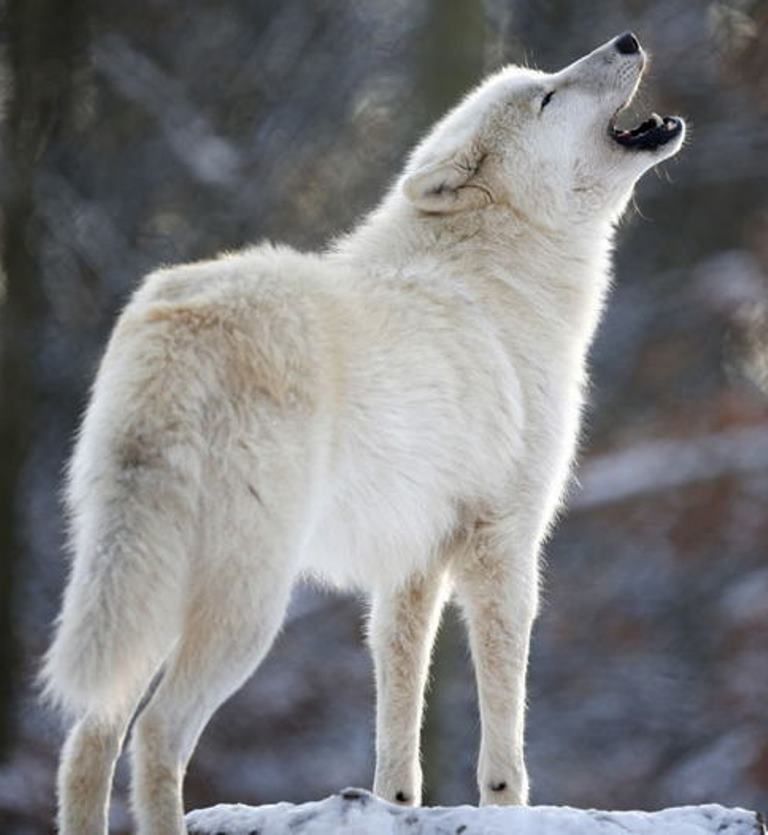
The show goes on to highlight the higher body temperatures through the use of water vapour escaping the mouths and noses of the paravian, Imperobator antarcticus and by showing thermal images of the animals. The latter is particularly pointless as the thermal videos don’t have a colour scale on them, so one doesn’t know how warm the animals are compared to their environment. This may have been a choice made to avoid having to commit to a specific body or air temperature…but it was more likely an oversight from the filmmakers as they liked the idea of thermal imaging rather than its actual utility. Similarly, the extensive water vapour leaving the nose and mouth of these dinosaurs indicates poor thermoregulatory abilities that clash with anatomical and paleophysiological modeling data (Bourke et al. 2018; Porter and Witmer 2020). This is also in stark contrast to extant polar animals, which rarely show water vapour leaving their bodies.
Food requirements for Imperobator
Attenborough informs the audience that I. antarcticus must make a kill every few days to maintain their metabolic fires. For starters, all we know of I. antarcticus is a foot (Case et al. 2007; Motta et al. 2025), so we are already in mostly made-up territory. No data on food requirements or really even ecology have been done for this species. One partial justification for the high food requirements here can be blamed on the family of five presented here, because PP continues to portray every “raptor-like” dinosaur as a pack hunter.
Too much snow
This is another sin throwback to Ice Worlds. We are told that the freshly fallen snow is muffling the tracks of the I. antarcticus pack. Since it’s all based on the same modeling data, it makes sense. That said, I still disagree with it for the myriad reasons given in Ice Worlds.
Morrosaurus in fully feathered floof
The other major star in this scene is the ornithopod, Morrosaurus antarcticus. This was a basal ornithopod that is currently only known from some very fragmentary right hindlimb material (ends of the femur and tibia, along with proximal ends of some metatarsals and a phalanx; Rozadilla et al. 2016). It’s enough to say that this animal lived in Antarctica at the time, but that’s about it. The choice of fully enfluffening the animal was a very bold claim. The enfluffening is reminscent of an old John Conway piece showing a Hypsilophodon foxii in the rain. Given that M. antarcticus appears to be within Ornithopoda (which currently only show scale impressions) I find this interpretation to be borderline anti-scientific. So, double sins here.
Imperobator the ornithopod specialist
We see a lone M. antarcticus “making a living” eating shoots and twigs on the snowy ground. The camera then points to a hidden I. antarcticus eyeing down its prey. Attenborough informs us that I. antarcticus specialize in this type of prey. It is at this point that I will remind the readers that I. antarcticus is known from a single foot. That’s it. Just a whole lot of speculating here.
The lake scene
This is one of the most fanciful scenes in the entire Prehistoric Planet series. It starts with M. antarcticus bolting from its pursuers. Attenborough tells the audience that M. antarcticus is faster than I. antarcticus but the latter are more maneuverable. All that from one fossil that is a partial right leg and another fossil that is a foot. So, you know, made up.
Things come to a head when the animals reach the end of the forest and are greeted by a frozen lake that is “half a mile wide”. The lake is massive. On par with boreal lakes such as Lake Louise in Banff National Park. The frozen lake becomes the climax of this chase scene, with both M. antarcticus and three of the five I. antarcticus running across it. This scene was built for suspense, but it comes at a cost to the science. For, you see, we can actually gauge just how cold things needed to be for this scene to happen.
Ice accumulation on a lake, river, or ocean can be roughly calculated using Stefan’s ice growth model (Stefan 1891; modified equation from Arp et al. 2020):
Zice = α√AFDD
Zice = the thickness of the ice in cm.
AFDD is the accumulated freezing days in the weird units of °C per day (i.e., absolute values for degrees at or below freezing multiplied by the continuous days at that temperature).
α = an ice growth coefficient in cm /°C-0.5/day-0.5
Next, we need to get the mass of our dinosaurs. Morrosaurus antarcticus has been reconstructed at a length between 4–5 meters (~13–16ft), following rough estimates from Rodilla et al. 2016 (and more concrete statements from Garcia-Marsa et al. 2020). If a 2 meter Hypsilophodon foxii is ~20 kg (Paul 2016), then an animal of similar build that is over double that length should be closer to 160–300 kg (~350–660 lbs). Imperobator antarcticus is estimated to be about the same size as Deinonychus antirrhopus (Motta et al. 2025), which is around 60–73 kg (~130–160 lbs; Paul 2016). Three animals in the same space are around 180–219 kg of mass. I’ll note here that Paul tends to underweigh his dinosaurs, so this should be considered a conservative estimate. The animals in this scene are shown running across the ice. The mechanics of running means that each animal will impart approximately double the force onto the ice (upwards of 600 kg for M. antarcticus and 146 kg for I. antarcticus). I will also note that the M. antarcticus individual being chased appears closer to the same size as its paravian pursuers (so smaller than the holotype). As such, a weight of 100 kg for each animal might fit better here. Alternatively, the older interpretation for I. antarcticus as a Utahraptor ostramaysi sized animal may be happening here (Ely and Case 2019), in which case these paravians would be closer to 1 tonne each in mass.
Now, safe ice thicknesses for a single human (90 kg) walking on ice is 10 cm, whereas a group of people and ATVs such as snow mobiles are safe on ice between 12–15 cm thick (300–2000 kg). That means the ice on this frozen lake needs to be about 15 cm thick for the dinosaurs in this scene to safely cross the way that they are. Ice growth values (α) typically vary from 0.5–0.8 (Ashton 1989), with the higher values for colder regions (values can extend into +3 territory but these are for extremely cold areas such as modern-day Alaska). We will use these values as our boundary range.
At an alpha of 0.5, the antarctic temperature would have to stay below -5°C for 180 days (6 months), -10°C for 90 days (3 months), or -20°C for 45 days (1.5 months).
At a higher alpha of 0.8, antarctic temperature would need to be -5°C for 71 days (2.4 months), -10°C for 36 days (1.2 months), or -20°C for 18 days (0.6 months).
Keep in mind that Stefan’s ice growth model assumes pure water with no wind movement or snow cover. All of these external factors will have an insulating effect on ice growth, as will the ice thickness itself (thicker ice grows slower), meaning that these should all be viewed as overestimates of ice growth. Ashton (1989) points to these limitations leading to overestimations of ice growth, especially for ice <10 cm, but the chase scene requires ice higher than 10 cm anyway.
Lastly, we need to consider the time needed to freeze the lake over in the first place. Returning to Lake Louise, that lake typically starts freezing over in October and doesn’t completely freeze over until late November. The lake then starts to thaw in March. That’s what it takes for a lake that is 70 meters (~230 ft) deep in an area of the world with a mean annual temperature of 2.8°C (warmest month 14.4°C, coldest month -8.9°C). Mesozoic Antarctica didn’t get that cold. Estimated mean annual temperatures for James Ross Island in the Maastrichtian are 11.7°C–13.6°C, with the lowest values hitting 8.8°C and the highest values at 14.5°C (Ditchfield et al. 1994)
In short, this scene likely could not have happened. Not without much lighter animals, or a much smaller and shallower lake.
Five sins for this one.
Scene 5: Return to European islands

This scene features the return of Hatzegopteryx thambena from the first scene.
Baseless speculation
Hatzegopteryx the bowerbird
As with the Forests episode, we are once more treated to a scene in which an extinct animal acts in a manner reserved for a specialized group of birds today. Naish admits to this being heavily speculative in the Megathread, which is good but still doesn’t excuse being so speculative here. All the more so when the argument is that we have some showy extant archosaurs, but then once more leaning on a very specialized group of birds.
The entire courtship scene is created from whole cloth with no data to support it. Did H. ambena actually do this? Did any pterosaur act this way? We currently have no way of knowing and that is how we should be presenting these things. Naish is not a proponent of this approach and makes that clear in the Megathread.

While this can make for some very entertaining TV, it is very bad for science and science communication.
Mostly speculation
Hatzegopteryx is Europe’s top predator
This is a bit of a biased take in favour of pterosaurs. I can’t really say too much here aside from H. ambena being one of the larger predators in this region. It was certainly a top predator, but it may not have been the top predator.
Sexual dimorphism
H. ambena are shown as sexually dimorphic animals, with the showier male attempting to attract the more subtly adorned female. We currently lack that level of information for Hatzegopteryx. However, there are studies on other pterosaurs (well, Pteranodon) that hint at potential sexual dimorphism in the crests of these animals (e.g., Bennett 1992; Tomkins et al. 2010). Couple that with how sexual dimorphism is distributed across the phylogeny of sauropsids and this has a fairly good backing for it.
Final sin count: 30
References
Witton MP, Naish D. 2008. A Reappraisal of Azhdarchid Pterosaur Functional Morphology and Paleoecology. PLoS ONE 3(5):e2271.

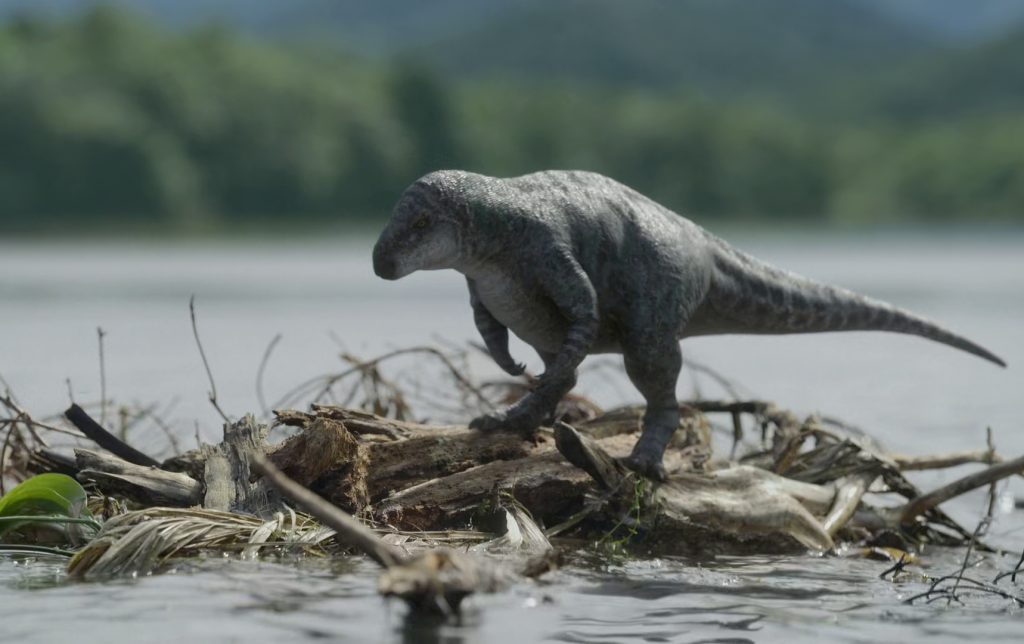
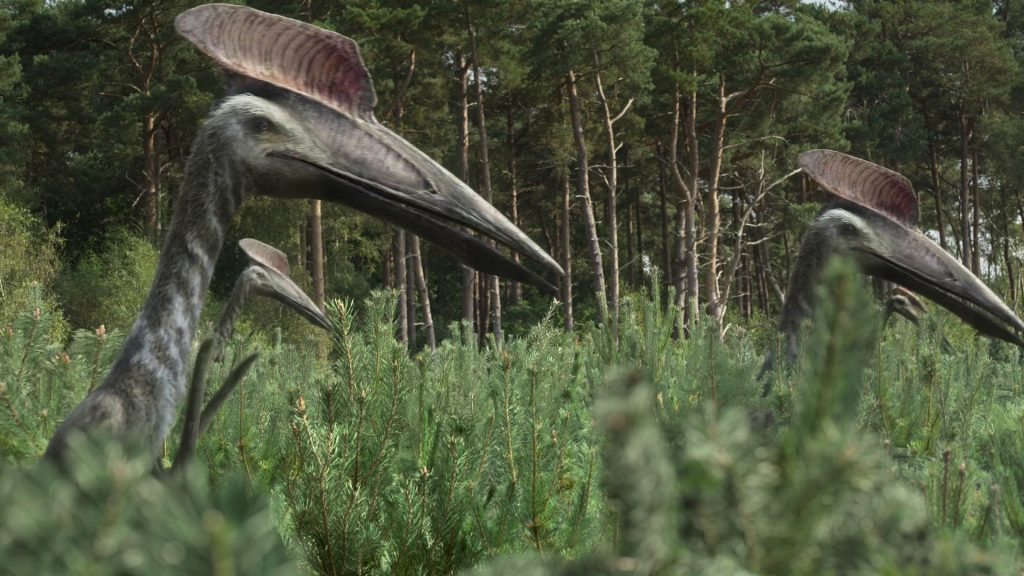
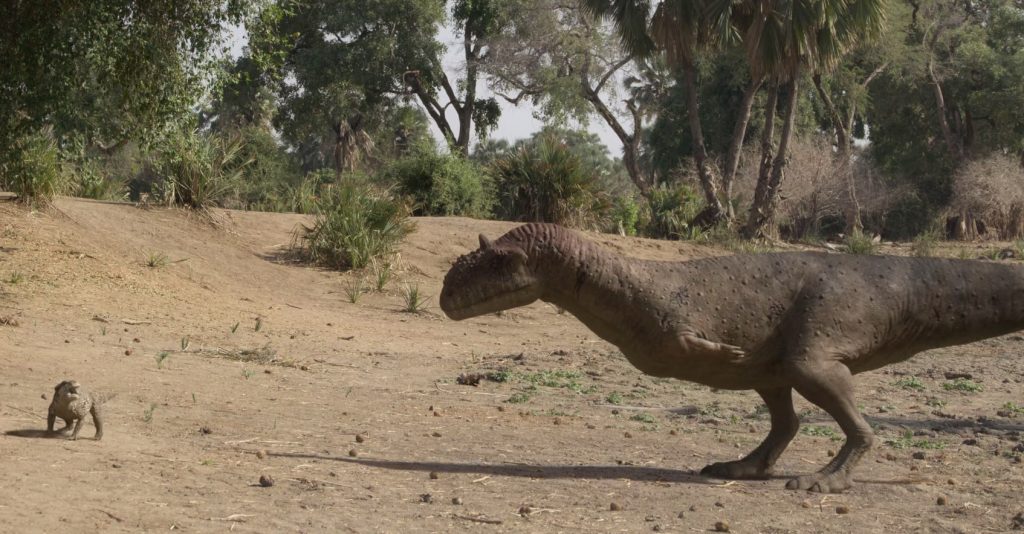

The burrower-hunting Masiakasaurus concept originated with Duane Nash (https://antediluviansalad.blogspot.com/2015/09/masiakasaurus-proposed-as-fossorial.html)
Granted, Nash’s ideas are often wildly speculative; but this one seems to have some decent arguments, and Thomas Holtz agreed with it
Good find there. I hadn’t realized that Nash tossed that idea around originally. I agree that he can have some out there takes, but I always appreciated how much homework Nash would do to support his hypotheses.